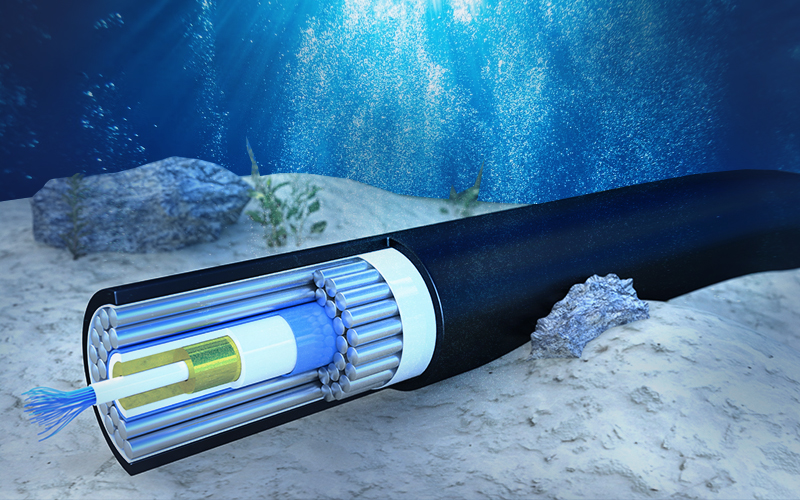It’s an increasingly dangerous world for operators of critical infrastructure. Geopolitical tensions are on the rise and the critical infrastructure that supports modern life has a target on its back.
Swedish investigators have found convincing evidence that the rupture of gas pipelines in the Baltic Sea was not accidental. It was “gross sabotage” carried out by a state actor. Submarine cables that support Internet traffic are also at risk.
The cable known as AAE-1 that stretches from Hong Kong to Marseille, France was cut on June 7 of this year, throwing millions offline. The cause is unknown, but the effect was felt in seven countries. When Russia annexed Crimea in 2014, one of its first acts was to damage communication cables linking the peninsula with Ukraine.
Rishi Sunak, the new British Prime Minister, authored a policy paper on the vulnerability of undersea cables in 2017. In it he stated:
“Undersea cables are the indispensable infrastructure of our time, essential to our modern life and digital economy, yet they are inadequately protected and highly vulnerable to attack at sea and on land, from both hostile states and terrorists.”
An Insurance Policy in Space
The concept of using satellites as backups to terrestrial networks isn’t new, but it has been challenging to implement for telecom organizations. Most implementations have leveraged Geosynchronous Earth Orbit (GEO) satellites that are located 36,000 kilometres above Earth, creating an unavoidable latency challenge.
Modern cloud-based applications assume low latency. Without it, they fail, or at best work in a very suboptimal way. GEO latency ranges between 600 milliseconds to 800 milliseconds, making it least preferred as most internet and cloud-based applications these days require low latency – less than 100ms – to conform with security protocols and for good quality performance.
GEO SATCOM also requires specialized expertise because satellite and terrestrial networks weren’t built to the same standards. Finally, there isn’t enough throughput to support terrestrial networks. For example, Telesat Lightspeed, Telesat’s next-generation LEO network, has over 10 Terabits of global capacity – more than the combined capacity of all GEO satellites in orbit today.
This kind of performance changes the equation and enables enterprise-class LEO platforms to reliably back up terrestrial networks under threat. Telesat Lightspeed was designed from day one as the best non-terrestrial solution when deploying fibre was not feasible. It creates virtual fibre. This means delivering very high throughput data links with low latency that is on par with terrestrial fibre.
Telesat Lightspeed is a transport network designed for enterprise-class broadband connectivity (Layer 2 or IP). Steerable multi-Gbps data links can be brought into concentrated areas of demand, such as a remote community cut-off due to some kind of accidental or hostile action. The global, mesh network in space is possible due to next-generation technology such as software-defined networking and optical inter-satellite links (OISLs) that connect each satellite.
All of this throughput requires no specialized satellite expertise. Telesat Lightspeed meets MEF standards for carrier Ethernet connectivity. This means that it’s as easy for enterprise customers to plug into Telesat Lightspeed transport as it is for any terrestrial carrier. And service providers can land traffic in-country or in-region, enabling sovereign control of their data.
Capacity Pools – Flexible Protection Built In
Carriers will purchase a regional or global capacity pool from Telesat with guaranteed service level agreements (SLAs). The telecom operator maintains complete control over how the capacity is “sliced and diced” to each site in their network, prioritizing data as they see fit using Class of Service (CoS) controls. For example, a telecom operator could immediately reduce capacity from some of its under-utilized backhaul sites and increase capacity for critical restoration, provided that there was an antenna available to connect on-premise.
A carrier could tap into Telesat Lightspeed’s software-defined networking and steerable multi-Gbps data links that can deliver Gigabits of data to a single location. In effect, this creates an enterprise “Hot Spot” to deliver emergency connectivity.
Bandwidth on Demand as an option?
For enterprise sites that are connected via fibre, LEO connectivity can be leveraged as a backup solution in the event of a fibre outage. Customers would need to preposition a Telesat Lightspeed compatible antenna and be provisioned into the network.
The customer could reserve a small bandwidth pool to keep the connectivity link active, and then surge on-demand in the case of a broad outage, paying for bandwidth as consumed, the way most cloud resources are purchased today.
Many argue that connectivity is so important to modern life it qualifies as a utility, as essential as electricity, water and sewage systems. A sobering proof of this is the focus bad actors are putting on disrupting connectivity around the globe to further their own goals.
Critical infrastructure needs to be better protected, and next-generation LEO platforms make SATCOM a realistic backup plan for vulnerable customers and citizens.



